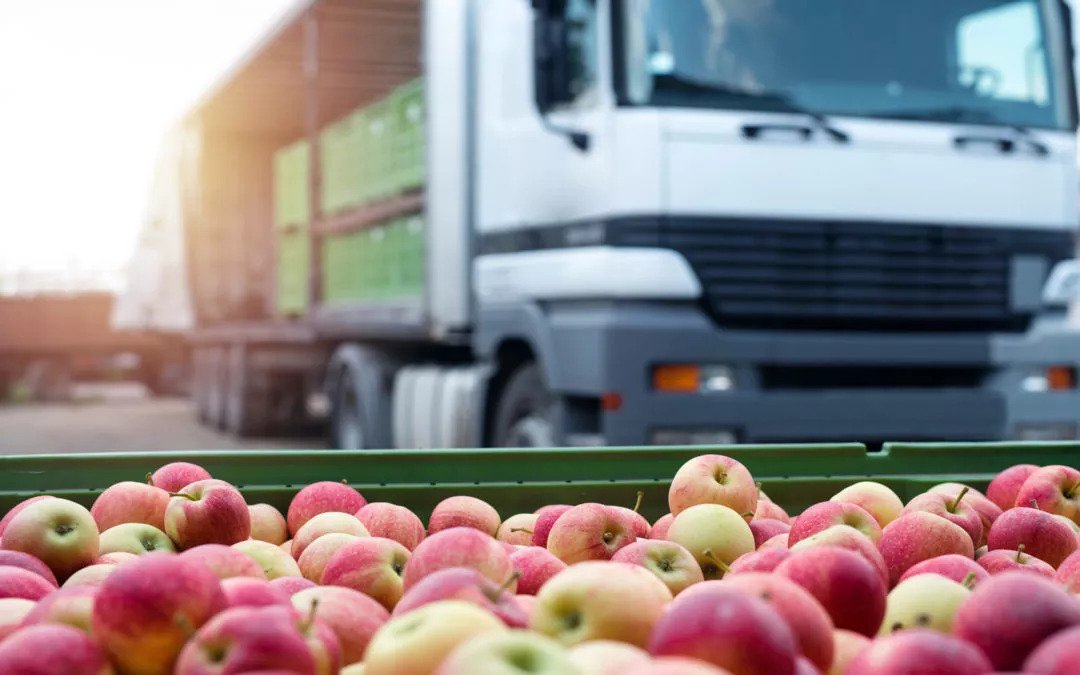Text of presentation at the 8th Nigeria Annual Transport Lecture organised by Transport Day Newspaper on Friday, May 21, 2021.
COLD CHAIN LOGISTICS
LOGISTICS
The process of planning, implementing and controlling the efficient, cost-effective flow and storage of goods, services, and related information, from point of origin to point of consumption, for the purpose of conforming to customer requirements.
Supply Chain Management
The design and management of seamless, value-added process across organizational boundaries to meet the real needs of the end customer (According to the institute of Supply Management).
Logistics Bill Of Rights
Ensuring the availability of the
o Right product
o Right quantity
o Right condition
o Right Place
o Right time
o Right customer
o Right cost
In short: satisfy the customer
Strategic: Maximize profits of all supply chain partners.
THE COLD CHAIN
The cold chain involves the transportation of temperature-sensitive products along a supply chain through thermal and refrigerated packaging methods and the logistical planning to protect the integrity of these shipments. There are several means by which cold chain
products can be transported, including refrigerated trucks and railcars, refrigerated cargo ships, reefers, and air cargo.
COLD CHAIN LOGISTICS/ WHAT IS IT?
LOGISTICS + TEMPERATURE CONTROL (REFRIGERATION) = COLD CHAIN LOGISTICS
INTRODUCTION
Cold chain is the system used for storing Food, Pharma and products that require controlled temperature. It is otherwise called Cold Chain within the supply chain or immunization supply chain in the case of Vaccines. It is a series of links that are designed to keep items within recommended temperature ranges from the point of manufacture to the point of immunization.
What is Cold Chain Management system?
As the name says, the cold chain is a logistics management process for products that require the refrigerated temperatures that customers demand. … A successful cold chain ensures temperature-sensitive products are kept within optimal temperature ranges and maintain the desired states from start to finish.
The “Cold Chain” is the system of transporting and storing vaccines within the temperature range of 35°F (2°C) to 45°F (8°C). The cold chain begins when the vaccine is manufactured, moves through to the state distribution centre and ends with the local immunization provider at the time of administration.
What is cold chain products?
It takes a chain of precisely coordinated events in temperature-controlled environments to store, manage and transport these life-saving products. This is called a cold chain. Vaccines must be continuously stored in a limited temperature range – from the time they are manufactured until the moment of vaccination.
Why are cold chains important?
Why is the cold chain important? The cold chain ensures that perishable products are safe and of high quality at the point of consumption. Failing to keep the product at the correct temperatures can result in textural degradation, discolouring, bruising, and microbial growth.
What are cold chain procedures?
The purpose of the vaccine “cold chain” is to maintain product quality from the time of manufacture until the point of administration by ensuring that vaccines are stored and transported within WHO-recommended temperature ranges. This module provides guidance for workers at the health facility level.
What happens if a cold chain is broken?
Any break in the Cold Chain conditions – whether caused by failure to follow established procedures or faulty equipment – can result in food that is likely to spoil more rapidly, resulting in food that may be unsuitable and potentially be unsafe for consumption.
How does Cold Chain work?
Cold chain logistics serves to keep the temperature for these goods at a constant throughout the transportation phase of the cycle. It involves correct packaging, proper transportation equipment, carefully chosen transportation routes, perfect timing, and visibility to ensure that what was expected is what happened.
Components Of The Cold Chain
The cold chain has three main components, each of which must combine to ensure safe vaccine transport and storage:
- Transport and storage equipment
- Trained personnel
- Efficient management procedures.
Elements of cold chain
- Personnel
- Equipment
- Procedure
The Pharmaceutical Value Chain
- The pharmaceutical industry is hugely complex because it involves so many markets, products, processes and intermediaries. It is also heavily regulated, global, and used by everyone at some stage in their life.
- No wonder the supply chain for delivery is often fragmented and understood only in discrete sections. Changes in one area impact upon the others, and environmental factors such as pricing, regulatory change or actions by competitors impact the whole supply chain in ways that are not easily understood or managed.
VACCINE cold chain? Vaccines are:
- Biological Product
- Lose Potency With Time
- Process irreversible and accelerated if proper storage conditions are not adhered to.
2. Assurance in potent product and vaccine programmes
- Professional responsibility
- Confident the vaccines you give will be effective
- Public Health responsibility
- Public confidence in immunisation programmes
3. Reduce Wastage From Errors
4. Compliance With Manufacturers
- Any vaccine that has not been stored at a temperature of 2-8oC as per its licensing conditions is no longer a licensed product
Cold Chain Equipments
- Walk-in freezer
- Walk-in cooler
- Deep freezer
- Ice lined refrigerators
- Domestic refrigerators
- Cold box
- Vaccine carriers
- Day carriers
What are perishable foods?
- Foods that are likely to spoil, decay or become unsafe to consume if not kept within specific environmental parameters.
- Achieved by refrigeration of storage space, alteration of atmospheric gaseous contents, food irradiation, etc. to slow/stop bacterial growth.
- Fresh fruits and vegetables, milk, meat, poultry, fish, many processed food products like fresh milk and dairy products, frozen meat and seafood products.
- Fruits & vegetables have high water content, around 70-90%, which enables bacteria to multiply fast (unlike cereals, water content 8 to 10%).
Food Preservation (Shelf Life)
- Shelf Life is the length of time that food may be stored without being unfit for use, consumption or sale. Extended with temperature control (refrigeration, insulated containers, controlled cold chain, etc) creating more opportunities for farmers/producers to access markets.
- Food preservation aims to increase the life/shelf-life of food by
(a) modern methods – refrigeration, canning and irradiation,
(b) traditional methods – drying, salting, smoking and fermentation. - It targets to reduce spoilage.
- It is part of the entire procedure of processing foods.
Advantages of Food Preservation and Processing
- Reduce wastage
- Increase the income of Producers/Farmers
- Add value to agricultural produce
- Control inflation and Price fluctuation
- Ensure greater supply to consumers
Challenges
- Lack of Road Infrastructure
- Continuity of the cold supply chain
- Uneven distribution of cold chains
- High capital investment
- -Rs.80-90/sq.ft.($ 1.6-2.0) against Rs.30/sq.ft. ($ 0.6) in west
- Power supply
- -17-18% power deficit
- -30% of total expenses against 10% in west
- Management of different temperatures
- Awareness and Mindsets
- Error Irreversibility
- Highly temperature-sensitive cargo
Strengthening logistics is a complex challenge that needs support at the highest levels of Government
- Strong institutions, effective public sector coordination, and government support at the highest levels required
- Logistics involves coordination among many actors providing a wide range of services and subject to multiple legal and regulatory frameworks & institutions
- Effective regulation is essential to ensure appropriate competition, administration of transport infrastructure, Customs revenue, safety issues, and supply chain security
- Improving logistics involves addressing multiple and often conflicting goals for economics (fiscal policy vs. profitability).
Logistics is critical for Nigeria… but logistics services are inadequate
- Efficient logistics are critical to growth when trade accounts for a huge % of GDP
- Location advantage gives Nigeria the unique opportunity to become a transit logistics hub and develop transit services
- The development of the transport sector is critical to national competitiveness
- Transport capacity is underutilized, the available infrastructure and services are substandard and end-users face high logistics costs
- Nigeria ranks 110th (out of 160) in the 2020 Logistics Performance Index
Nigerian Cold Chain Facts
- The development of an effective farm to market cold chain is vital to increase the availability and affordability of safe, nutritious food for low-income Nigerians
- Presently, Nigeria has less than 1% of the world’s cold storage and mobile refrigerated logistics capacity. The market is huge with great potential for growth, and if properly tapped the industry will benefit the economy and improve the life and living of Nigerians.
- It is estimated that Nigeria can save $9 billion annually by avoiding spoilage of goods through transportation of refrigerated products?
- These are fast foods, dairy products, fish market, supermarkets and any business that requires cold chain logistics in day to day operations
- Nigeria loses an estimated 15million metric tons of perishable farm produce annually
There is an urgent need to invest in the Cold Chain sector to assist the diversification effort of the government.
Thank You!













